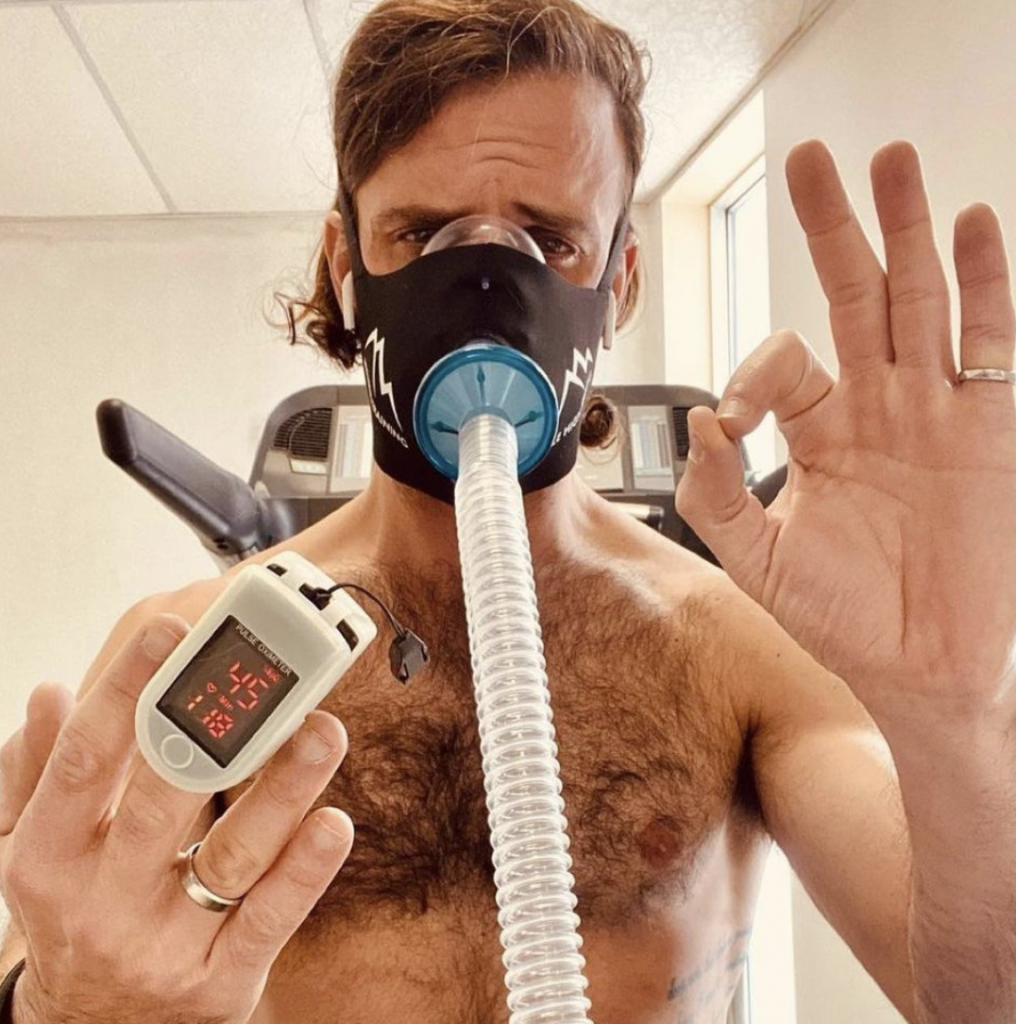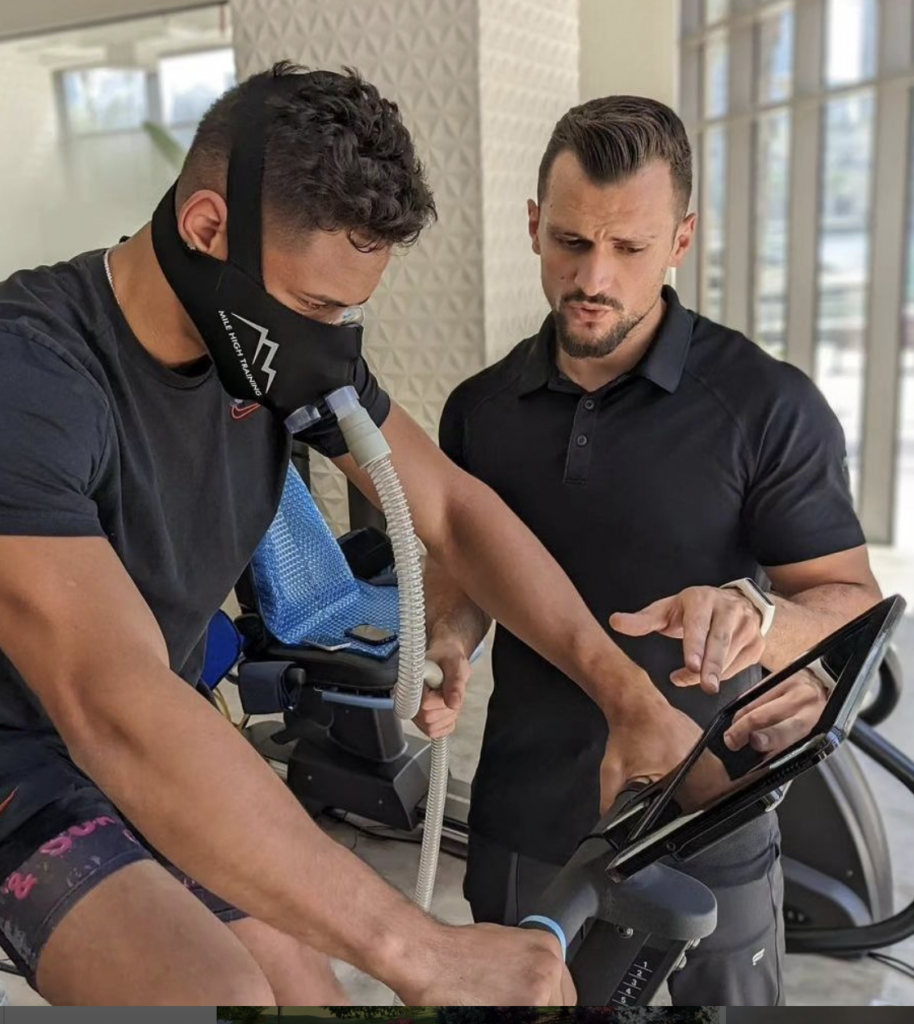While you can’t fully replicate the effects of high altitude at home, you can certainly support your body’s acclimatization process before your trip. One option is to rent a hypoxic (altitude) tent, which reduces the oxygen concentration you breathe while sleeping, helping your body begin to adapt.
However, this should always be combined with a carefully planned acclimatization schedule once you are actually at high altitude, as nothing replaces the real exposure and gradual adjustment your body needs in the mountains.
There is a solution and if you are considering a high altitude trip like Aconcagua, Denali, some Himalayan peaks you could considering supplementing your training and preparation with one of these systems. Contact us today for further information.
Here’s How to Reduce Your Risk of Altitude Sickness
If you’re preparing for one of the Seven Summits or another high-altitude adventure, it’s natural to be concerned about altitude sickness. While no training can completely eliminate the risk, pre-acclimatization at home can make a real difference in how your body responds when you reach the mountains.
By using altitude simulation equipment—such as hypoxic tents for sleeping or altitude masks for controlled breathing and exercise—you can begin the adaptation process before your expedition. This exposure helps your body adjust to lower oxygen levels, which may reduce the severity of symptoms like headaches, nausea, or fatigue, and support stronger performance at altitude.
It’s important to remember that altitude training at home is only part of the solution. The most effective strategy combines pre-acclimatization with a gradual ascent, proper hydration, and a carefully structured acclimatization schedule during your climb.
With the right preparation, you’ll give yourself the best chance to stay healthy, perform well, and fully enjoy the challenge of your high-altitude journey.
The Science of Pre-Acclimatization: How to Prevent Altitude Sickness Before Your Climb
When planning a high-altitude climb, understanding the science of pre-acclimatization is essential to reducing your risk of altitude sickness. At sea level, healthy individuals typically have an oxygen saturation (SpO2) level of 98-99%, meaning nearly all hemoglobin in the blood is carrying oxygen.
However, as you ascend to higher altitudes, the oxygen levels in the atmosphere decrease, leading to a significant drop in blood oxygen saturation.
This reduction in oxygen saturation is the primary cause of the negative effects of altitude, such as Acute Mountain Sickness (AMS), headaches, fatigue, nausea, and in severe cases, High-Altitude Pulmonary Edema (HAPE) or High-Altitude Cerebral Edema (HACE).
Prolonged exposure to low oxygen levels without proper acclimatization can make these symptoms more severe and potentially life-threatening.
Our altitude simulation equipment is designed to address this challenge by conditioning your body to function efficiently in a low-oxygen environment. By using our altitude tents for simulated high-altitude sleeping or our altitude masks for intermittent hypoxic breathing (IHB) and stationary exercise, you can safely expose your body to reduced oxygen levels before your expedition.
This exposure triggers physiological adaptations such as:
1). Increased red blood cell production to carry more oxygen.
2). Enhanced lung ventilation for better oxygen intake.
3). Improved oxygen delivery to muscles and tissues.
In simpler terms, our equipment builds resistance to lower oxygen levels in your blood. If your body can maintain higher oxygen saturation during your climb, your chances of developing altitude sickness decrease significantly. This approach not only improves your physical performance at altitude but also ensures a safer, more enjoyable climbing experience.
Whether you’re aiming for the Seven Summits or planning any other high-altitude trek, pre-acclimatization with our equipment gives you the best possible preparation for success.

How Does Altitude Training Work? The Key to High-Altitude Success
If you’re preparing for a high-altitude trek or planning to climb one of the Seven Summits, understanding how altitude training works is essential for preventing altitude sickness and ensuring peak performance.
Our comprehensive pre-acclimatization programs combine sleeping at simulated altitude, exercising in a low-oxygen environment, and Intermittent Hypoxic Breathing (IHB) to help your body adapt before your adventure begins.
Sleeping at Simulated Altitude
Sleeping at altitude is one of the most effective ways to acclimatize before your trip. Using our altitude tents, you can simulate sleeping at elevations up to 12,000 feet, gradually training your body to function in a low-oxygen environment.
This process stimulates the production of red blood cells, which are crucial for transporting oxygen throughout the body.
By the time you embark on your high-altitude expedition, you’ll be better prepared to handle the reduced oxygen levels, allowing you to fully enjoy the experience without the debilitating effects of Acute Mountain Sickness (AMS).
Exercising at Altitude
High-altitude exercise involves sustained workouts in a hypoxic (low-oxygen) environment, which further enhances your body’s ability to adapt to altitude. Our altitude masks allow you to simulate conditions found at elevations of up to 21,000 feet.
This type of training increases lung capacity, improves oxygen efficiency, and boosts cardiovascular endurance, making it easier to tackle challenging climbs like Mount Kilimanjaro, Aconcagua, or Everest Base Camp.

Intermittent Hypoxic Breathing (IHB)
Intermittent Hypoxic Breathing (IHB) consists of short, stationary breathing sessions at simulated altitudes as high as 21,000 feet. These sessions typically last between 5-10 minutes and are repeated in cycles to trigger rapid physiological adaptation.
IHB is an excellent addition to your pre-acclimatization routine, promoting faster adaptation and improving oxygen utilization at high altitudes.
Training Schedule and Acclimatization Protocols for High-Altitude Success
To achieve optimal results and reduce the risk of altitude sickness on your next high-altitude expedition, we recommend a strategic combination of sleeping at simulated altitude and incorporating either high-altitude exercise or Intermittent Hypoxic Breathing (IHB) sessions.
This proven approach enhances your body’s ability to adapt to the low-oxygen environment encountered at high elevations.
Recommended Training Schedule for Pre-Acclimatization
For the most effective pre-acclimatization, your training should include:
Sleeping at Altitude
Use our altitude tents to simulate sleeping at elevations of 8,000 to 12,000 feet, allowing your body to adjust to reduced oxygen levels.
High-altitude exercise: Engage in sustained workouts using an altitude mask to simulate elevations up to 21,000 feet, improving cardiovascular performance and oxygen efficiency.
Intermittent Hypoxic Breathing (IHB): Perform stationary breathing sessions at simulated extreme altitudes to trigger rapid physiological adaptation.
We recommend conducting these sessions 3-4 times per week for at least 3-4 weeks prior to your departure.
This consistent exposure helps your body produce more red blood cells, improve lung ventilation, and enhance oxygen delivery to your muscles, ensuring you’re physically prepared and fully acclimatized for your climb.
Tailored Protocols for Every Climb
In addition to pre-acclimatization at home we have a personal trainer available if you would like additional assistance with your preparation. If you’re preparing to tackle Mount Kilimanjaro, Aconcagua, Everest Base Camp, or any of the Seven Summits and want to maximize success contact us today.
Why it Works
Simulated altitude training, also known as hypoxic (low oxygen) training is the only proven method of pre-acclimatizing to altitude. Acclimating to altitude at-home will increase your oxygen saturation levels while on the mountain.
Low blood oxygen levels in the blood are the main culprit of altitude sickness. The
only way to condition yourself to high altitude is to expose yourself to lower oxygen. This can be done prior to your altitude adventure. Check out the package.
Testimonials
Please see the research immediately below and check out our testimonials.
Proven benefits for acclimatization
-Reduced symptoms of Acute Mountain Sickness (AMS)
-Reduced incidence of Altitude Sickness
-Higher blood-oxygenation levels at altitude
-Greater work tolerance/exercise capacity at altitude
-Increased capillary density

Customer Testimonials:
“Honestly, with the weather and altitude, there is no way we could have made it without your altitude tent, only 7 people summited that day and the other 5 were professional climbers.” – J.K., GA
“Considering we had no altitude issues while much of the group did, I’m very happy I made this investment to ensure altitude wouldn’t be something that could derail our adventure. Thanks a ton!” – Dr. Grant M., CA
“Coming straight from sea level to Puebla (7,000 feet) with no problem and doing Malinche (14,500 feet) less than 24 hours after landing; we felt great the whole time. Very happy we used the equipment for 3 weeks prior to the trip, there’s no way we would have been as successful or felt as good.” – Cody, FL
“Thanks for guiding me to a successful race!! Ended up getting first in our age division and avoiding altitude sickness. I actually felt better than my partner who lives in Colorado” – Jaclyn, NC
More Testimonials
“It’s been working great, got my resting heart rate down 4 beats.” – Patrick, NY
Things are going great!! I’m really progressing with my training and seeing some great results. Still sleeping in my tent and we are at 13,500k feet. Feeling the best I’ve felt in years!! – Adam, IA
“In conclusion, I think sleeping in the high altitude tent imposed all expected physiological changes in my body: it increased my blood hematocrit and hemoglobin, improved my metabolic efficiency and gut health. It gave me a noticeable change in energy levels and sports performance feel two weeks post-altitude.
In addition, it seemed to improve my electrolytes, DHEA-S and glucose levels as well as my body composition and recovery – changes that were maintained 2wks post high-altitude. I had no
problems or side effects with my sleep and adaptation process at all.” – Loukia Lili, PhD, NY
